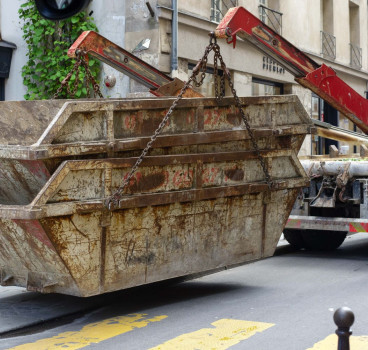Concrete with superpowers - Cracks that vanish, buildings that heal
For centuries, concrete has been the backbone of our built environment, from towering skyscrapers to bustling pavements, but like any material, concrete is susceptible to the relentless bite of time and wear. Cracks appear, widen, and weaken the very structures that hold our lives together. But what if concrete could fight back? What if buildings could heal themselves?
Enter the fascinating world of self-healing concrete. This revolutionary material isn't a futuristic fantasy; it's being actively developed by researchers around the globe, promising to transform the way we build and maintain our world.
Imagine tiny, microscopic superheroes embedded within the concrete matrix. That's exactly the vision behind bacterial self-healing concrete. Researchers introduce dormant bacteria like Bacillus pseudofirmus or Sporosarcina pasteurii into the concrete mix.
When cracks appear and expose these bacteria to water and air, they spring to life. They feed on calcium lactate, a chemical naturally present in concrete, and produce limestone – the very same material that binds concrete together. As the limestone fills the cracks, the concrete regains its strength, healing itself from within.
This isn't just a theoretical notion. In 2015, researchers at Delft University of Technology in the Netherlands successfully repaired cracks in concrete beams using self-healing bacteria. Similarly, the University of Wisconsin-Madison demonstrated the effectiveness of bacterial self-healing in precast concrete panels.
Bacteria are net the only superheroes in the self-healing game. Another approach utilises encapsulated minerals like calcium carbonate or zeolite. These tiny capsules are scattered throughout the concrete mix. When a crack forms, it ruptures the capsules, releasing the minerals. These minerals react with water and form a binding gel, effectively patching up the crack from the inside out.
A leading example comes from researchers at Binghamton University, New York, who developed self-healing concrete using encapsulated sodium silicate. In their tests, this concrete exhibited significant crack-healing ability, restoring up to 85% of its original strength.
While the self-healing properties are undoubtedly a game-changer, the benefits of this technology extend far beyond crack repair. Imagine the benefits of reduced maintenance costs: Buildings made with self-healing concrete wouldn't need frequent repairs, leading to significant cost savings in the long run.
Self-healing concrete can potentially extend the lifespan of structures, reducing the need for replacements and the associated environmental impact. Cracks compromise a building's structural integrity, making it vulnerable to damage in extreme weather events. Self-healing concrete ensures structures remain strong and resilient.
By reducing the need for frequent repairs and replacements, self-healing concrete can also contribute to a more sustainable built environment with lower embodied carbon emissions.
Despite the promise, self-healing concrete is still in its early stages of development. Challenges remain, such as ensuring the long-term viability of the bacteria or minerals within the concrete, adapting the technology for different concrete mixes and environments and making it commercially viable. Additionally, concerns about potential unintended consequences, such as bacteria migration or environmental interactions, need to be addressed.
However, the field is experiencing rapid progress. Advancements in encapsulation technology, optimised bacterial strains, and the development of smart monitoring systems are paving the way for wider adoption. Companies like Basilisk Concrete and Biomason are already leading the charge with commercially available self-healing concrete solutions.
Imagine a future where our cities no longer wear the scars of time and neglect. Buildings stand tall, their cracks magically vanishing, thanks to the silent work of microscopic healers within their very core. This isn't a utopian dream - it's the promise of self-healing concrete, a technology poised to revolutionise the way we build and care for our world.
For more information:
- Delft University of Technology: https://www.tudelft.nl/en/ceg/research/stories-of-science/self-healing-of-concrete-by-bacterial-mineral-precipitation
- University of Wisconsin-Madison: https://en.wikipedia.org/wiki/Self-healing_concrete
- Binghamton University: https://www.sciencedaily.com/releases/2018/01/180117152511.htm
- Basilisk Concrete: https://en.wikipedia.org/wiki/Self-healing_concrete
- Biomason: https://biomason.com/
Additional Articles

Why everyone has a favourite skip and what it says about you
In construction, there are two universal truths – tea, of course, is essential and believe it or not, everyone - whether they are prepared to admit it - has a favourite skip. It may sound strange,...
Read moreThe cultural significance of the bacon roll in UK construction
Walk onto any construction site in the UK at 7:30am and you’ll quickly discover that the most important piece of equipment isn’t a digger, a drill or a laser level. It’s a humble, foil-wrapped,...
Read more

Check out the odd things unearthed on construction sites
Dig deep enough on a construction site and you might be amazed at what you find. In fact, if there is anywhere destined to uncover hidden treasures, you are in the right place. Large-scale ground...
Read more